Azure AD B2C (OIDC) for BSS
Azure AD B2C authentication has been introduced for allowing single sign-on between your Azure AD B2C and the BSS. Users that have already logged in Azure AD B2C will be able to automatically login to the BSS without entering their credentials.
Setting up Azure AD B2C STEP 1
To enable the Azure AD B2C (OIDC) feature in BSS, please proceed with the following guide:
Go to this link: https://portal.azure.com/ and click on the "Azure AD B2C".

Click on the "Applications" option, from the Manage menu.
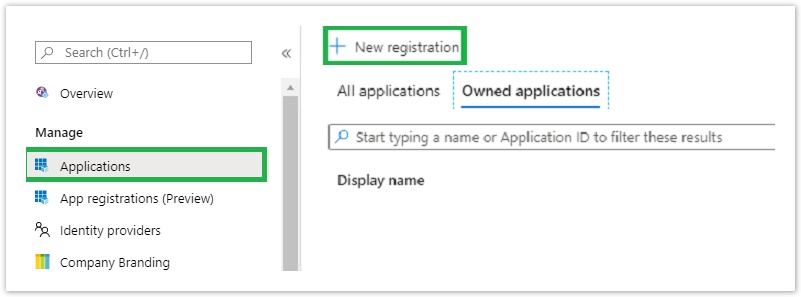
Then click on the "+ New registration" button to register an application.
On the following window, enter a name for your application under the Name text field. Example: "Open Id Connect AAD B2C"
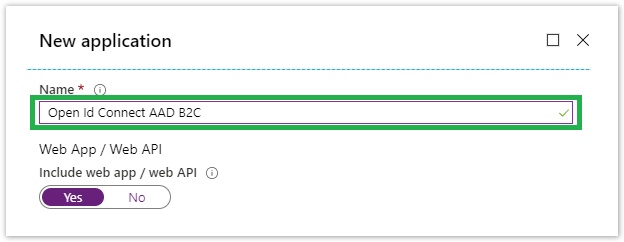
Continue by clicking on the "Create" button.
From the next window, copy and store for later use, the "Application ID".
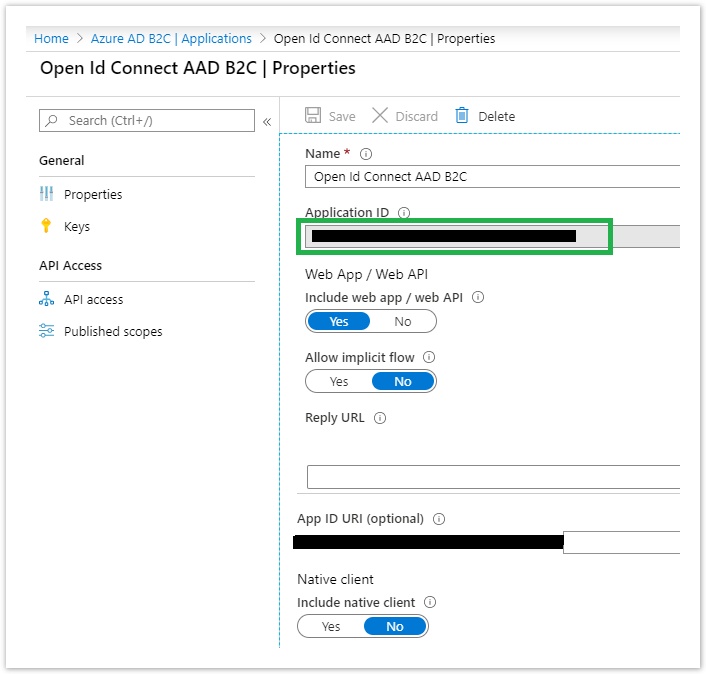
Back to the Manage menu, click on the "Keys" and then click on " + Generate key".
Copy and store, for later use, the "App key" that was created.

Back to Manage menu, you will find under it the Policies menu, click on the "User flows (policies)" and then click on " + New user flow".
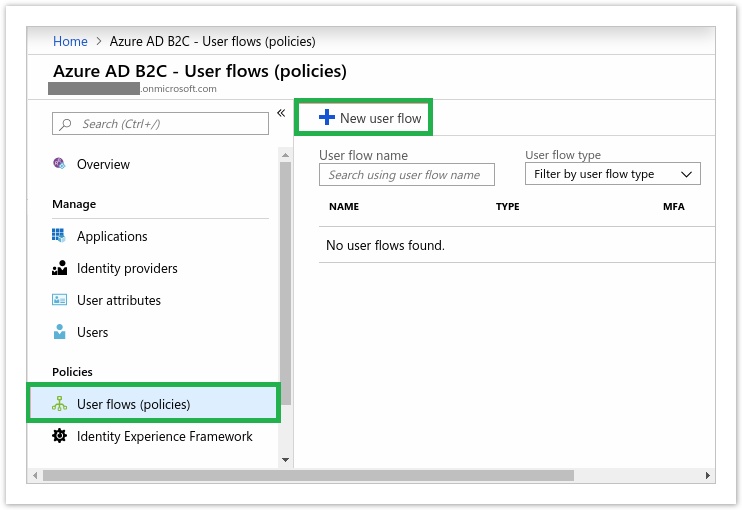
- Afterwards, continue this sub-step with the following guide: https://docs.microsoft.com/en-us/azure/active-directory-b2c/tutorial-create-user-flows
- After you have finished the steps from the linked Microsoft guide above, copy and store the "Name" for later use.
Then go to "User flows (policies)" → "Properties".
Copy and store, for later use, the "Issuer (iss) claim" (Example: https://<domain>/78ae85c0-087f-4938-8942-4b4316c55c96/v2.0/).
Setting up the BSS Mechanism STEP 2
Now on BSS, go to: BSS Setup > Administration > System Options > BSS Login Settings (as explained on this Documentation).
Click on the "Settings (OIDC)" button.

ID and Secret - Setup
On the following page, you are required to utilize the previously-stored IDs from "Step 1" and paste them to their corresponding fields. More specifically:
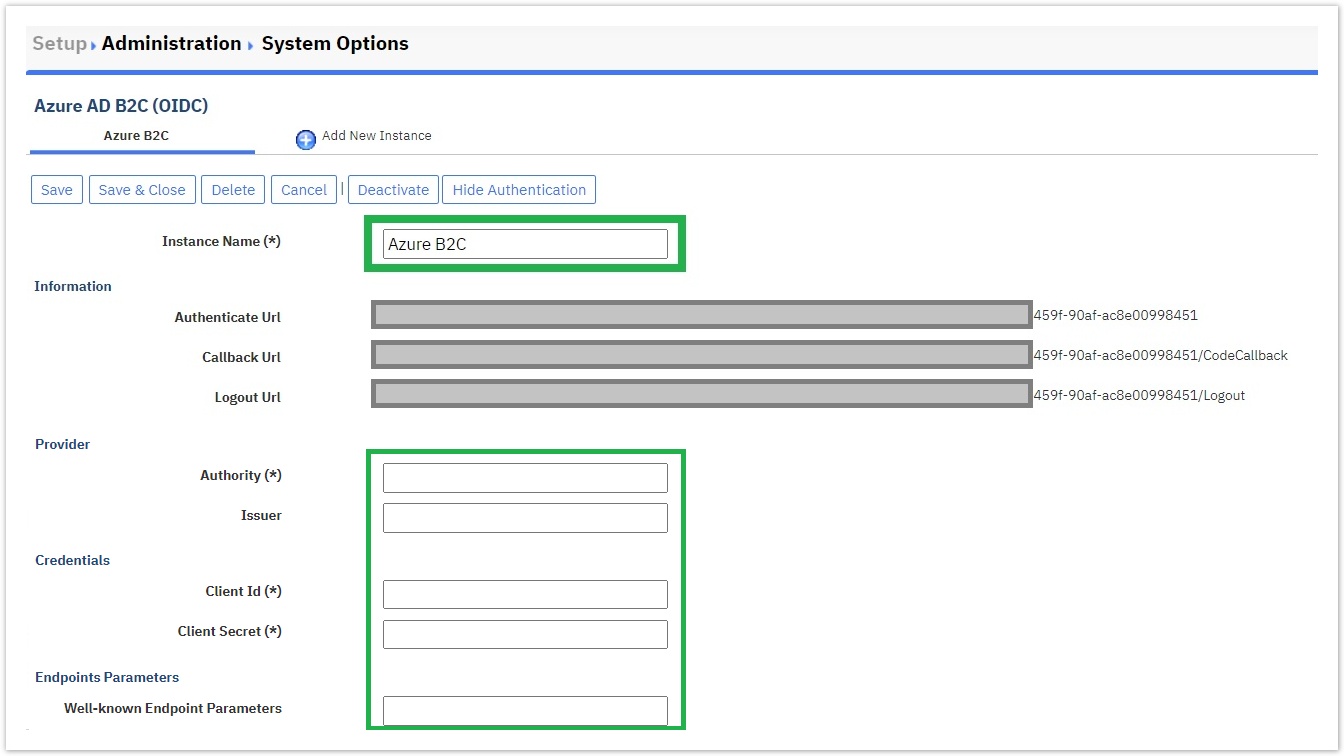
- Provide a name to the Instance Name text field.
Paste your stored [Issuer (iss) claim] https://<domain>/78ae85c0-087f-4938-8942-4b4316c55c96/v2.0/ to the Authority text field (domain: <tenant subdomain>.b2clogin.com).
- Paste your stored [Application ID] to the Client Id text field.
- Paste your stored [App key] to the Client Secret text field.
In order to paste your stored [User Flow Name] to a field, please read the following information:
Attribute Mapping - Setup
Concerning the Attribute Mapping section of this page, it is introduced as an easy way to map the JSON response of the identity provider to a Property of the BSS Account/Contact/User.
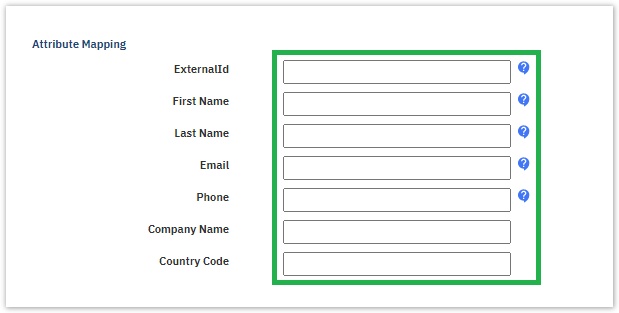
Next to the first five attribute-mapping fields, there is a question mark icon, that upon hovering over it, it displays the default mapping values for your aid.
You don't need to fill in the Attribute Mapping text fields, since the attributes "ExternalId", "First Name", "Last Name", "Email", and "Phone" already have the default mapping (claims), which you can witness below.
| Field | Value |
|---|---|
ExternalId | 'sub' |
First Name | 'given_name' or 'name' if empty |
Last Name | 'family_name' |
'email' or 'preferredUsername' if empty | |
Phone | 'phone_number' |
Company Name | |
Country Code |
However, if you wish to alter the default mapping, you can do so with either of the two JSON response objects namely IdToken, UserInfo that are utilized for the attribute mapping.
Please also note that many Attribute Mapping fields can be declared with a comma "," and the priority with which they are written applies (if no value is found in the first, the code checks the second).
Below you will find the two aforementioned JSON files that can be used as an example.
As it is evident from the JSON files, any extra parameter set at the OIDC provider, can be placed within the ExtraParameters.
For example, if you want to set the Company Name based on the value of the "cp1" field, then as mapping you must set "IdToken.ExtraParameters.extension_cp_gan". The same logic applies to any other extra parameters that are needed.
Saving Configured Changes
After you have finished with this page's configuration, you must click on the "Save" button.
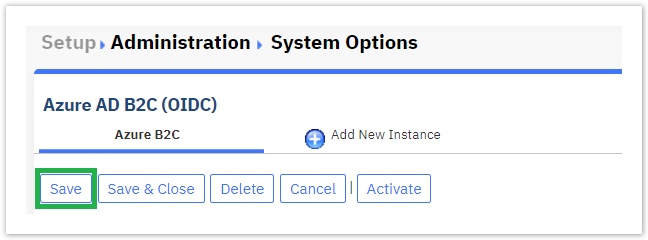
Now that you have saved all those aforementioned settings of this page, you can copy and store, for later use, the following URL:
- The "Callback Url".
Setting up Azure AD B2C - Continued STEP 3
Now, by going back to the https://portal.azure.com/ you can perform the next five easy actions:
- Click on "Azure AD B2C".
- Click on "Applications".
- Find the application with name "Open Id Connect AAD B2C" or any other name that you have assigned to your application during its creation.
- Paste your stored [Callback Url] to the
- Click on "Save".
Testing & Activation STEP 4
The final steps of the initialization of the External Authentication feature, require you to once more go back to the BSS Setup > Administration > System Options > BSS Login Settings and click on the "Settings (OIDC)" button.
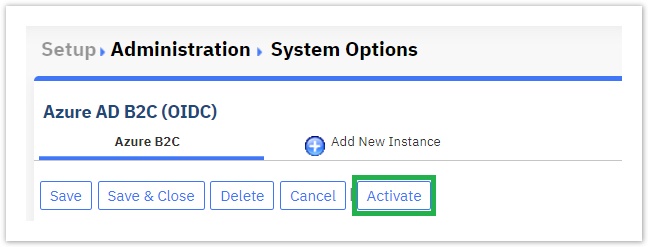
- Click the "Activate" button on the top bar.
- Copy the "Authenticate Url" and open a new web browser tab to paste that URL.
- Your web browser will redirect you to Azure AD B2C in order to log in with your Azure AD B2C credentials.
- After a successful login, you will redirect back to the BSS and our system will log in/register you.
By clicking on the "Show in BSS" button from the top bar and the External Authentication will from now on be available to the BSS.
The same button will then display the “Hide from BSS“ in case you wish to hide this External Authentication option from the BSS.

First BSS Login with Azure AD B2C Credentials
After the configuration and activation of the Azure AD B2C external authentication for BSS, you can choose to login via your Azure AD B2C credentials.
You can click on the "Azure AD B2C" button, located under the "---- or ----" section.

Provide your corresponding credentials on the new Azure AD B2C login page that you are redirected to or choose one of your "Microsoft Login" saved accounts.
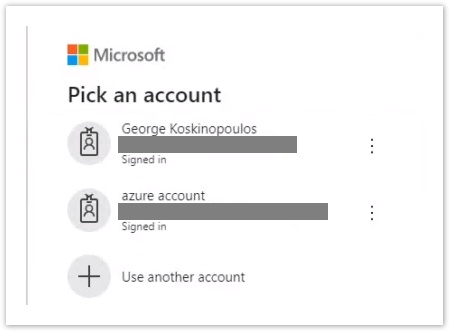
After a successful login, you are again redirected to the BSS.
As a result, the account and contact that have been created in our BSS are now connected with the Azure AD B2C account used to login to the BSS.